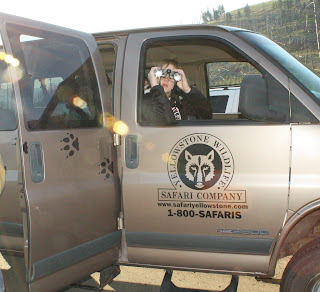


Yellowstone never intervenes with the natural course of events that happen in this wild environment with the exception of things that happen as a result of the human world.
We saw this first hand 20 minutes into our first day after Carl spotted a newborn elk curled up by the side of the road.
The mother had given birth and the space between the ground and the road had eroded to the point that the mother could not get the baby across.
Carl called the ranger and together they wrapped the newborn in a blanket carefully void of human scent to take it across the street closer to its mother.
In contrast, last week a female bison died after giving birth. The calf stayed by her side trying to nurse the corpse for days before dying of starvation.
It was amazing that a wolf had not found the vulnerable creature first, but it did not.
Rangers knew what was happening, but correctly see themselves as observers of this amazing system of life.
Bones and carcasses in various forms of decomposition can be found everywhere.
Carl had done forensic work for the government where he helped determine cause of death.
He taught us a lot about what to look for when you observe these occurrences in nature.


















